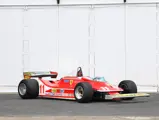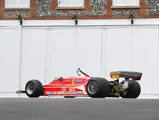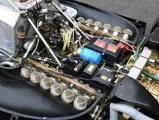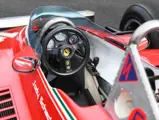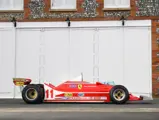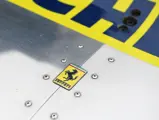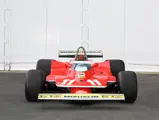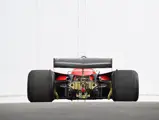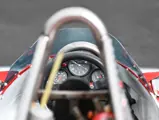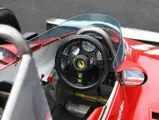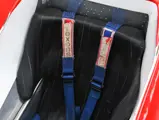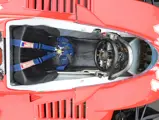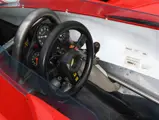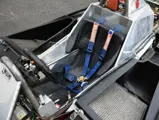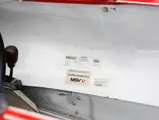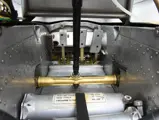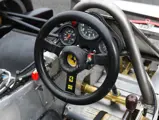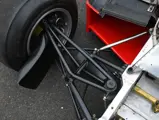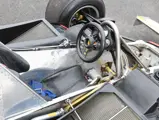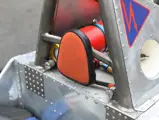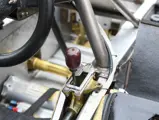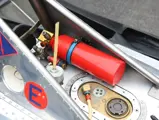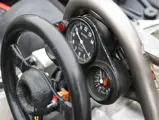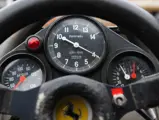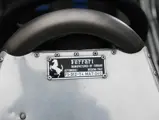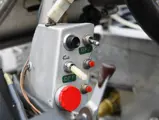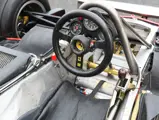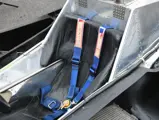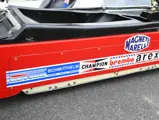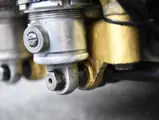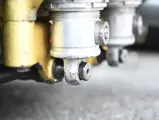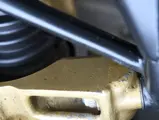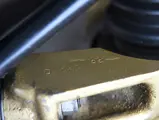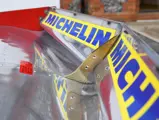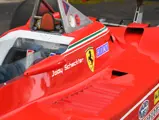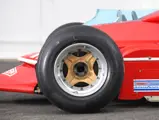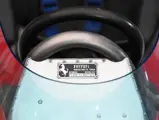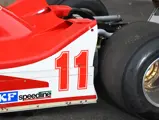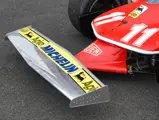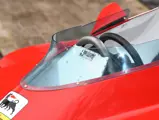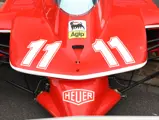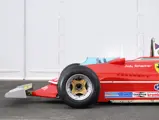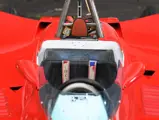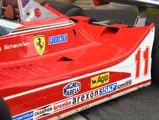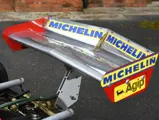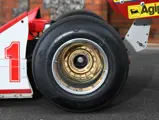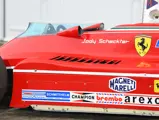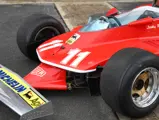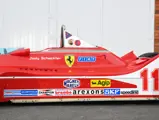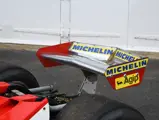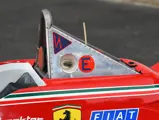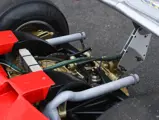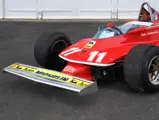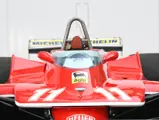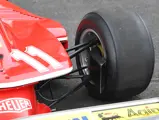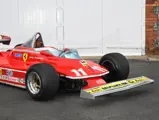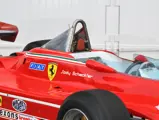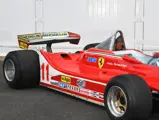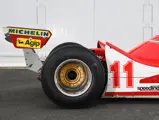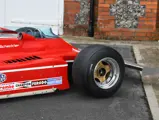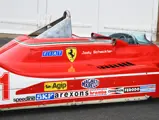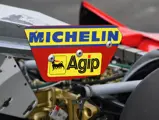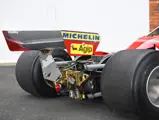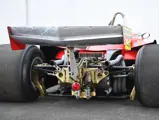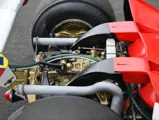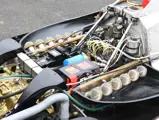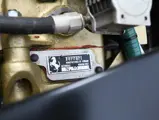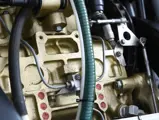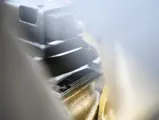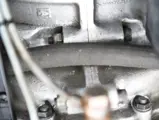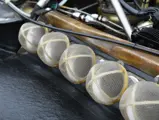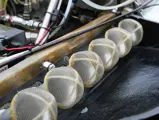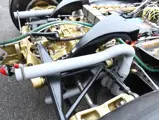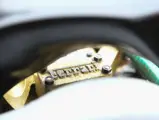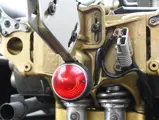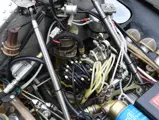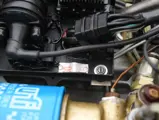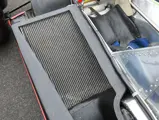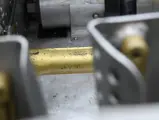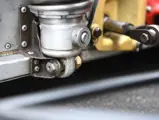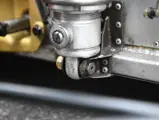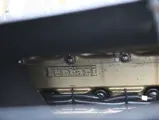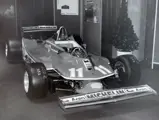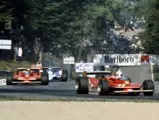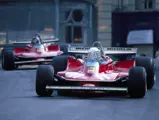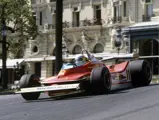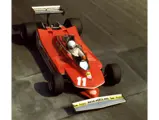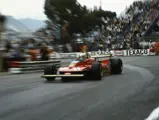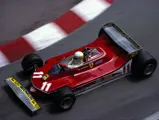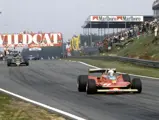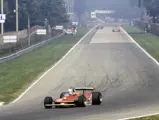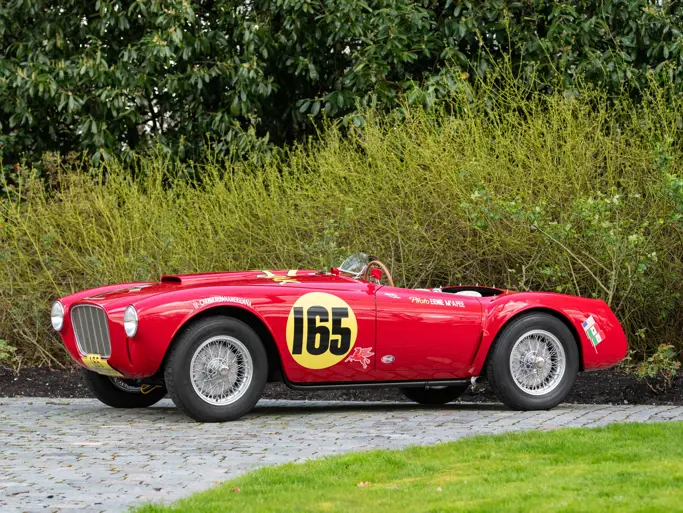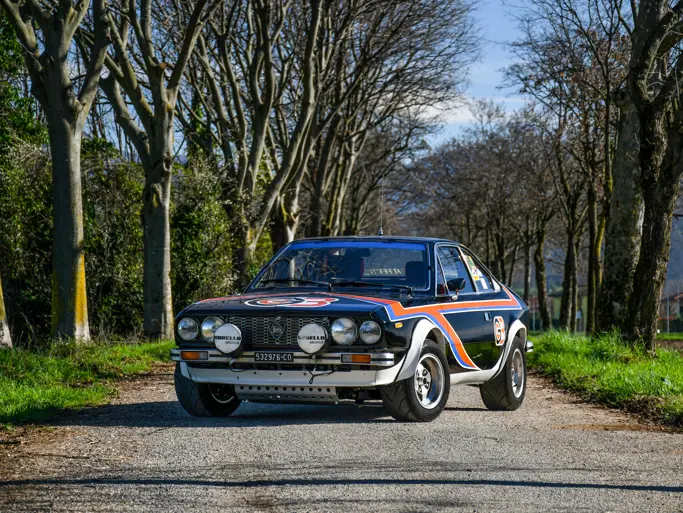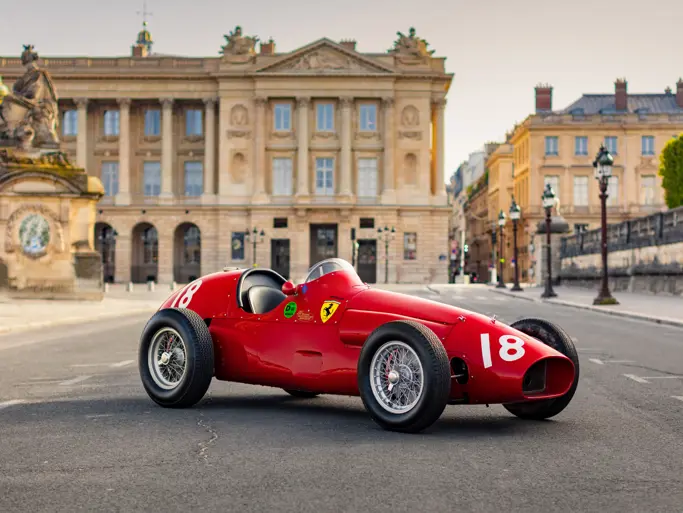Monaco
1979 Ferrari 312 T4
Offered from The Jody Scheckter Collection
{{lr.item.text}}
 | Monaco, Monaco
| Monaco, Monaco
{{internetCurrentBid}}
{{internetTimeLeft}}

- Offered from The Jody Scheckter Collection
- Enzo Ferrari’s last Formula 1 Drivers’ World Championship-winning car
- The winner of all three of Scheckter’s victories in 1979—Belgian, Monaco and Italian Grands Prix
- The 1979 Formula 1 Drivers’ and Constructors’ championship-winning chassis when it took at the chequered flag at Monza
- One of Mauro Foghieri’s greatest designs—Ferrari’s first full ground-effect Grand Prix car, and powered by a stunning 3-litre flat-12 engine
- Purchased by Jody Scheckter from Ferrari in November 1982—original Bill of Sale from the factory on file
- Entirely original since leaving Maranello, including its heavily worn seatbelts and numbered components throughout
- Only ever driven by Jody Scheckter—raced in nine races during 1979, and only driven by him since, including at the 2019 Monza Grand Prix weekend
- A unique opportunity to acquire a World Championship-winning Ferrari from its champion
Veuillez noter que ce lot est entré dans l'UE sous couvert d'une autorisation d'importation temporaire, qui doit être annulée soit en exportant le lot en dehors de l'UE avec une lettre de débarquement approuvé accompagné des documents douaniers nécessaires, soit en payant la TVA et les droits d'importation applicables pour que le lot reste dans l'UE.
Every effort that Enzo Ferrari put into his eponymous marque was done to achieve one thing—win World Championships. Without Grand Prix racing, Ferrari’s existence would be hard to imagine, or at least certainly in the legendary form it is now. Equally, Formula 1 as a sport would be barely recognisable with its most famous team.
Following Ferrari’s departure from the World Sportscar Championship in 1973, the Scuderia redoubled efforts on its Formula 1 programme, further developing the sonorous 3-litre 312-series of Grand Prix cars. Under the guidance of engineering genius Mauro Forghieri, the results of this strategy immediately reaped rewards with Niki Lauda acting as lead driver. With the introduction of the 312 T, with the T standing for trasversle for the radical transverse gearbox design, Ferrari now had a proper championship contender.
During six years of competition with the 312 T, the Scuderia achieved four Constructors’ World Championships and three Drivers' World Championships, becoming one of Ferrari’s most successful designs in the company’s history. Lauda achieved his two World Championships with Ferrari in dominant fashion, only being denied a third Championship by James Hunt during the extraordinary 1976 season. With the departure of Lauda for 1978, the team went in search of a new leader and settled upon a driver whose natural speed and aggression had matured into the most potent force—Jody Scheckter.
Scheckter had driven for top teams such as McLaren and Tyrrell, and finished 2nd in the 1977 World Championship for Wolf, so was perfectly experienced to take the pressure of the greatest seat in the sport.
The 312 T4 is one of Scuderia Ferrari’s most important cars, being the team’s first full ground-effect car, an aerodynamic device that has dominated the sport ever since. The aerodynamic limitation for the Ferrari against its Ford-Cosworth DFV-powered competitors was the flat-12, which meant that floor did not feature wide venturis. The competitive edge for the Maranello team was the sheer power and reliability of the Tipo 015 312 engine, something teams like Williams, Lotus, and Ligier couldn’t compete with.
After five rounds of the 1979 Formula 1 World Championship, Scheckter lay 4th in the championship behind joint-point-leaders Giles Villeneuve and Patrick Depailler, with Jacques Laffite closely behind. Scheckter had poor luck with Michelin’s new radial tyres—a collapsed side wall cost him an almost certain victory at Kyalami.
For the Belgian Grand Prix at Zolder, Scheckter was allocated a new 312 T4, chassis number 040. The circuit was not entirely suited to the T4 but Scheckter’s luck changed. Qualifying 7th, Scheckter charged through the pack and was chasing down Lafitte in 2nd when Depailler crashed out from the lead. Clearly racing with controlled aggression, Scheckter made his overtake for the lead on Lafitte an inevitability, there was little the Frenchman could do. Once in the lead, Scheckter created a dominant 15-second gap back to the Frenchman’s Ligier by the fall of the chequered flag. Scheckter’s drive in chassis 040 marked a turning point in his championship, catapulting him and Ferrari into the championship lead.
The Monaco Grand Prix has always been the jewel of the crown in the Formula 1 calendar—no race victory is more coveted by drivers. Scheckter had form around the streets of Monte Carlo having already collected three podiums and a victory against his name. Scheckter’s closed rival was his teammate, Villeneuve, who qualified only seven hundredths of a second behind him. The race weekend over 26 and 27 May was a masterclass from Scheckter and demonstrated why Enzo Ferrari had chosen him to lead his team. The race distance was a punishing 76 laps and mechanically sympathy would be key to finishing—something that the ferociously quick Villeneuve had less consideration for and contributed to his gearbox failure. In the words of Scheckter, ‘at Monaco I put everything into that car. Fierce opposite-lock and hammering over the kerbs earned me a 1 minute 26.45 second lap time and pole position for the race. I led from start to finish, which pushed Ferrari to a leading position in the Constructors’ rankings and took me closer to being Word Champion’.
Scheckter and Ferrari established a clear championship lead that he would never lose. Apart from the British Grand Prix, every race Scheckter drove during the remainder of the season was in chassis 040, collecting a 2nd-place finish at the Dutch Grand Prix. Perhaps this Ferrari’s greatest moment came at the Italian Grand Prix, held at Monza on 9 September.
Monza is hallowed ground for the tifosi—the scene of many of Ferrari’s greatest moments. A win at Monza for any Ferrari driver must be euphoric and guarantees them a place in the upper echelons of the firm’s pilots. For the 1979 edition of the race, Scheckter went into it with a chance of securing the World Championship, a dream scenario for the South African. Monza is one of the most demanding circuits on a car due to its long periods of full-throttle and high-speed corners—Scheckter was well aware of this and knew what he had to do to put the championship out of reach. Positioned 3rd on the grid, at the drop of the flag he got a perfect start to get ahead of the two turbocharged Renaults. Arnoux slipstreamed Scheckter’s Ferrari on the 2nd lap with the help of his indecently powerful Renault to make the pass. The South African hung on, lap after lap until Arnoux had taken too much from his engine and Scheckter retook the lead. An imperious drive followed and Scheckter took the chequered flag.
This victory marked an incredible moment of firsts and lasts. Scheckter had finally become Formula 1 World Champion in his first year at Ferrari, something which he had put everything on the line for, all the physical and financial risks from when he started racing in the tough environment of South Africa and then making his way through the several feeder series in Europe and America. At the same time, Ferrari won its sixth Constructors’ World Championship, which would be the only Championship that Giles Villeneuve would win. Monza marked the final victory of Scheckter’s career, and most importantly he become Enzo Ferrari’s last Drivers’ World Champion—a title the marque would not regain until the Michael Schumacher era. In the words of Scheckter, ‘Enzo was fantastic throughout. I recall being at Ferrari’s headquarters in Maranello. He was walking past, stopped, said, “Hello Champion” and walked off. That is all he ever said to me after winning the title for him.’
Today, championship-winning cars become immediately consigned to museums but 040 was prepared straight after Monza for the two North American Grands Prix of Canada and United States. A 4th place at Montreal was followed by an important moment at Watkins Glen for the United States Grand Prix. A troubled qualifying for Scheckter was compounded by him being spun off at the start. Clearly in a vengeful mood, Scheckter caught up the pack and then proceeded to scythe through it until he reached 3rd. With his position as champion secure, Scuderia Ferrari’s aim was to secure the runner-up spot in the championship for Villeneuve. With changeable conditions, Scheckter pitted to allow the team to correctly judge tyre strategy, something which paid dividends as Villeneuve took the win. Unfortunately, Scheckter suffered a puncture, ending his challenge for a podium finish, but he had helped his Canadian friend achieve his highest placing in Formula 1.
Scheckter’s career at Ferrari continued into 1980 with the lacklustre 312 T5 before he decided to retire from the demanding and dangerous sport. Out of his whole career, Scheckter wished to own one car, 040, and it was earmarked by Ferrari for him. As shown by the original purchase invoice, which is on file, Scheckter took ownership on 8 November 1982 and had 040 shipped by Maranello Concessionaires back to the United Kingdom.
Since 1982, this extraordinary Formula 1 car has remained in the stable of its champion. Demonstrated on several occasions, this Ferrari returned to Maranello for an engine rebuild prior to a demonstration at the 2010 Bahrain Grand Prix. Throughout his ownership, it has always been treated with the care and attention required to maintain it in demonstration condition, with its last major outing being at the 2019 Italian Grand Prix. During that weekend, Scheckter was reunited with several of his old mechanics and his old friend Piero Ferrari, all to the delight of the adoring tifosi.
Owing to this Ferrari not being raced since 1979, it remains extremely original to when it left the factory—extraordinarily it is one of only two examples to remain in T4 specification since the 1979 season with several other examples being modified to become T5s. Many parts are numbered with factory stampings such as the adjustable dampers. Once of the most apparent features are the original Arexons seatbelts, well-worn from the 1979 season and subsequent use. Importantly, this 312 T4 has never been driven by anyone other than Jody Scheckter.
The opportunity to acquire this incredible Ferrari 312 T4 is unique and truly unrepeatable. It would be remarkable for a Grand Prix Ferrari of this era to be offered from single ownership since leaving the factory, and further to this chassis number 040 is the only Ferrari from the “Enzo era”, which remains in the care of its champion. Few Formula 1 cars can claim to be as original as chassis 040—combining this with its provenance makes Scheckter’s 312 one of the greatest Grand Prix cars in existence. Today, Jody Scheckter is Enzo Ferrari’s last living champion and this sale will remain singular in perpetuity.
| 1979 Ferrari 312 T4 - chassis no. 040 | ||||||
|---|---|---|---|---|---|---|
| Race | Date | Entrant | No. | Drivers | Qualifying | Overall Finish |
| Belgian Grand Prix - Zolder | May 13, 1979 | Scuderia Ferrari | 11 | Jody Scheckter | 7th | 1st |
| Monaco Grand Prix - Monte Carlo | May 27, 1979 | Scuderia Ferrari | 11 | Jody Scheckter | 1st | 1st |
| French Grand Prix - Dijon-Prenois | July 1, 1979 | Scuderia Ferrari | 11 | Jody Scheckter | 5th | 7th |
| German Grand Prix - Hockenheim | July 29, 1979 | Scuderia Ferrari | 11 | Jody Scheckter | 5th | 4th |
| Austrian Grand Prix - Österreichring | August 12, 1979 | Scuderia Ferrari | 11 | Jody Scheckter | 9th | 4th |
| Dutch Grand Prix - Zandvoort | August 26, 1979 | Scuderia Ferrari | 11 | Jody Scheckter | 5th | 2nd |
| Italian Grand Prix - Monza | September 9, 1979 | Scuderia Ferrari | 11 | Jody Scheckter | 3rd | 1st |
| Canadian Grand Prix - Montréal | September 30, 1979 | Scuderia Ferrari | 11 | Jody Scheckter | 9th | 4th |
| United States Grand Prix - Watkins Glen | October 7, 1979 | Scuderia Ferrari | 11 | Jody Scheckter | 16th | DNF (tyre) |

